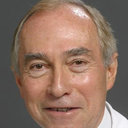Role of lipid peroxidation in gastric mucosal lesions induced by HCl, NaOH, or ischemia.
Kata kunci
Abstrak
We investigated whether lipid peroxidation is an important biochemical mechanism in acute gastric mucosal injury induced by acid, base, or postischemic reperfusion. Lipid peroxidation products, i.e., the concentration of conjugated dienes (absorbance at 242 nm), products absorbing at 270 nm, and malondialdehyde were measured in the gastric mucosa of rats killed 30 s or 1, 3, or 6 min after intragastric (ig) administration of 0.6 N HCl or 0.2 N NaOH. No increase in any of the lipid peroxidation products was detected at any of the time intervals. Mucosal lesions, however, were already visible at 30 s. Cumene hydroperoxide (1 ml, 100 mM ig) induced neither mucosal lesions nor lipid peroxidation. In vitro incubation of mucosal homogenates with cumene hydroperoxide (1 or 10 mM) however, rapidly induced elevation of the three parameters of lipid peroxidation. Ischemia induced by clamping the blood vessels of the stomach for 20, 30, and 40 min followed by reperfusion for 10, 30, and 40 min did not induce lipid peroxidation, despite the development of hemorrhagic mucosal lesions. Similarly, in gastric mucosal lesions induced by hemorrhagic shock no lipid peroxidation products were detected. In the small intestine, however, prolonged ischemia (2 h) followed by reperfusion (30 min) resulted in mucosal necrosis and elevation of malondialdehyde levels. These results suggest that lipid peroxidation is not a major pathogenetic mechanism in rapidly developing acute gastric mucosal injury caused by 0.6 N HCl or 0.2 N NaOH, or in the more slowly developing mucosal injury caused by postischemic reperfusion.


